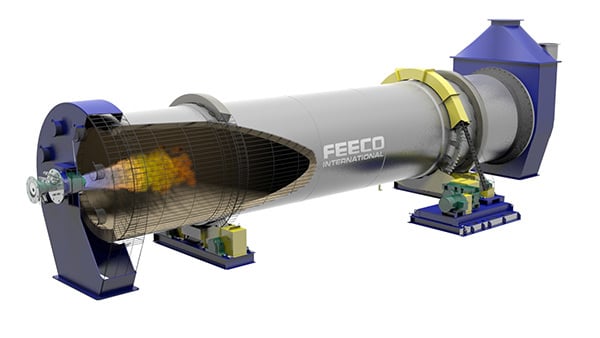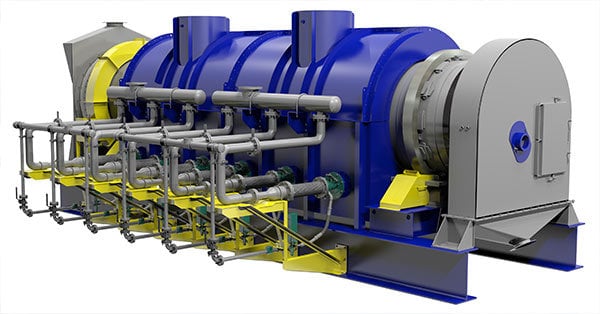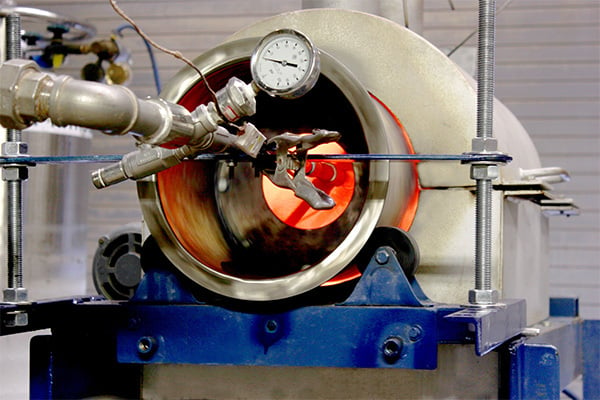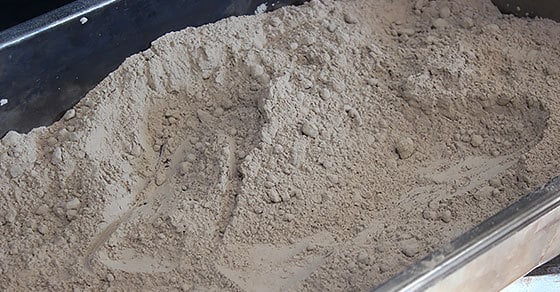Calcination is an essential thermal processing technique relied upon by a host of industrial processes to cause a chemical reaction or phase change, remove crystalline water, volatilize organic compounds, and more.
While calcination is applicable to a wide range of materials, it often requires material to fall within predetermined specifications for calcination to occur effectively and efficiently.
What follows is a look at what material characteristics are important in this process, and the types of pretreatment most often used to prepare materials for calcination.
How the Calcination Process Works
While the term calcination began as a way to refer to a very specific process, it has since evolved into an umbrella term, used to discuss all manner of thermal processes across industries. In general, however, all calcination processes use temperature and a controlled atmosphere to cause some kind of change in the material. The material may or may not be held at temperature for a predetermined duration in order to complete the intended reaction.
A rotary kiln or calciner is one of the most commonly used types of equipment for carrying out the calcination process. This device consists of a rotating cylinder set on a slight slope. The rotary kiln may be of the direct-fired or indirect-fired configuration, referring to how the heat is introduced to the material.
In a direct-fired calciner, the products of combustion and the material being processed are in direct contact, moving through the drum shell interior.

3D Rendering of a FEECO Direct-Fired Kiln/Calciner. In a direct-fired kiln, the material and products of combustion both move through the drum’s interior.
In an indirect calciner, the rotating drum is enclosed in a heat shroud or furnace in order to keep the material and heating medium separate. This heat shroud externally heats the rotating drum and the material is subsequently heated through contact with the drum shell interior.

3D Rendering of a FEECO Indirect Kiln/Calciner. As the cutaway shows, the rotating drum is enclosed in an externally heated furnace or heat shroud.
Pretreatment Options for Calcination
Because calcination relies on chemical changes within the material, feedstock characteristics have a significant effect on the effectiveness of the process. Apart from chemical composition, the most influential characteristics in this setting are typically:
- Particle size distribution (PSD)
- Moisture content
- Particle shape and uniformity
As such, producers must often pretreat their material. The most widely used types of pretreatment are summarized here.
Crushing and/or Grinding (Particle Size Reduction)
In general, the smaller the particle size, the more readily the material will respond to calcination, due to the increased surface area of smaller particles and therefore, the greater contact between the heat and material. Further, large lumps or rocks are challenging to handle and feed, making them impractical for use as a feedstock in most cases. They also take longer to heat up all the way through and may not heat uniformly.
As such, producers typically include a crushing and/or grinding step in their process in order to bring it into a size range amenable to calcination.
The ideal particle size distribution for a given calcination project is entirely dependent on the project goals and the material being processed. While achieving the smallest particle size possible may seem the obvious choice, this can introduce other problems such as poor flowability, so producers must find a balance between gas-to-solids contact and practicality.
Various types of equipment are available for crushing and grinding, depending on the level of particle size reduction required. The ideal particle size distribution is typically identified through testing.
Drying (Free Moisture Removal)
Many calcination processes center around removing crystalline or chemically bound moisture. However, before the chemically bound moisture can be removed, all free moisture must be removed as well. Likewise, even if the goal is not to remove crystalline moisture, the removal of free moisture is often a prerequisite to reach the intended objective.
For this reason, it is not uncommon for calcination operations to require a drying step prior to the calciner. Many wonder, however, why drying can’t simply be carried out in the same unit.
Although it is physically possible to remove free moisture in the calciner, it is inefficient and costly, as the comparably lower rate of heat transfer makes moisture removal slow, driving up fuel and energy costs.
As such, the pre-calcination drying step is typically carried out in a rotary dryer, which works on similar principle to a calciner, but is much more efficient at removing free moisture.
Pelletizing (Particle Size Enlargement)
In some cases, producers can benefit from pelletizing their material prior to calcination; by processing fines into round granules or pellets, producers can maximize the gas-to-solids contact and bed permeability in the calciner.
The pelletizing process can be carried out using a variety of equipment, with each type and combination thereof producing unique results. Most often, pelletizing for calcination is carried out in a disc pelletizer (also known as a pan granulator or balling disc) or granulation drum (also known as a balling drum, agglomeration drum, or granulator).
Developing Optimal Calcination Conditions Through Testing
The combination of conditions required to achieve the desired results efficiently in a given calcination process is not always readily apparent. Oftentimes, the material to be processed must go through testing in a facility such as the FEECO Innovation Center in order to identify the most favorable process and material conditions.
Various batch- and pilot-scale direct and indirect kilns are available for testing in the Innovation Center, along with a variety of support equipment and testing capabilities to determine the optimal pretreatment, feedstock, and process conditions, whether that involves pelletizing, drying, or particle size reduction. This includes the availability of:
- Pelletizing/Agglomeration Equipment
- Rotary dryer
- Baghouse
- Combustion chamber
- Thermal oxidizer
- Water quench tower
- Wet scrubber
- Gas sampling and analysis equipment
The Innovation Center can also identify and refine critical process and material data for the calcination process, such as:
- Air volume
- Drum slope and speed
- Emissions data
- Feed rate
- Residence/Retention time
- Temperature profiles
- And more…

Testing in a batch calciner in the FEECO Innovation Center
Conclusion
Calcination is a vital tool in industries ranging from chemical production to mineral processing and everything in between. But to be amenable to calcination, material must fall within feedstock parameters that will optimize the thermal treatment. For this reason, producers must sometimes employ crushing and/or grinding, drying, or pelletizing (or a combination thereof) prior to calcination.
FEECO is a leading expert in the design and manufacture of custom rotary kilns. Our Innovation Center offers a unique opportunity to thoroughly test material and identify critical process and material data for an efficient calcination operation, pretreatment requirements included. We also have a comprehensive parts and service program for keeping rotary kilns and calciners running their best. For more information on our calciners or related services, contact us today!



